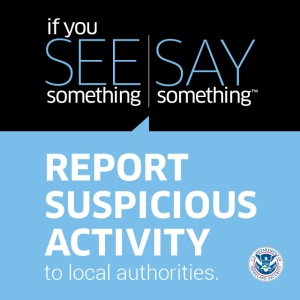An active shooter situation is when an individual, or multiple individuals, is engaged in shooting or attempting to shoot people in a confined or populated area.
If an active shooter is in your area, it is important to know how to respond. Call 9-1-1 when it is safe to do so, and provide important information such as the location and number of shooters, number and type of weapons used, potential victims, and an accurate physical description of the location and shooter(s).
Make a decision, trusting your instincts, to take action to protect yourself to survive the situation. You generally will have three options:
- Run (evacuate): Can you safely escape?
- Hide: Is there a good place to hide out or secure in place?
- Fight: Will you take out the shooter?

Run
- Know your organization’s emergency and evacuation plan. Have a safe route to escape and a plan in mind.
- Leave all belongings behind.
- Evacuate regardless of whether others agree to follow.
- Help others escape, if possible.
- Do not attempt to move the wounded.
- Prevent others from entering an area where the active shooter may be.
- Keep hands visible so law enforcement officers do not mistake you for having a weapon.
- Call 911 when you are safe.
Hide
- Hide in a secluded area, out of the shooter(s)’ view.
- Block the entry to hiding places by any means necessary. Use tables, chairs, bookshelves, and other objects to obstruct the entrance. Lock the doors, and cover any windows.
- Silence your cell phone (including vibrate mode) and remain quiet.
Fight
- Fight as a last resort and only when your life is in imminent danger.
- Act with as much physical aggression as possible.
- Improvise weapons or throw items at the active shooter.
- Commit to your actions . . . your life depends on it.
When Law Enforcement Arrives
- Know that law enforcement’s first task is to end the incident, and they may have to pass injured along the way.
- The priority of the first responders will be to identify the shooter and will need to ensure that you are not the shooter. Remain calm and follow all instructions given.
- Put down any items you may be carrying, such as jackets, bags, and keys.
- Keep hands raised with fingers spread. Hands should be visible at all times. Do not hold anything in your hands that could be mistaken for a weapon (including cell phones).
- Do not point, scream, or yell.
- Avoid sudden movements toward officers and running to them or holding on to them for safety.
- Do not stop to ask for help or directions while evacuating. It is important to move everyone as quickly as possible.
If Outside When a Shooting Occurs
- Drop to the ground immediately, face down as flat as possible. If within 15-20 feet of a safe place or cover, duck and run to it.
- Move or crawl away from gunfire, trying to utilize any obstructions between you and the gunfire. Remember that many objects of cover may conceal you from sight, but may not be bulletproof.
- When you reach a place of relative safety, stay down and do not move. Do not peek or raise your head in an effort to see what may be happening.
- Wait and listen for directions from Public Safety and/or law enforcement personnel.
Be Informed
- Sign up for active shooter training.
- If you see something, say something to an authority right away.
- Sign up to receive local emergency alerts and register your work and personal contact information with any work-sponsored alert system.
- Be aware of your environment and any possible dangers.
Make a Plan
- Make a plan with your family, and ensure everyone knows what they would do if confronted with an active shooter.
- Look for the two nearest exits anywhere you go, and have an escape path in mind & identify places you could hide.

